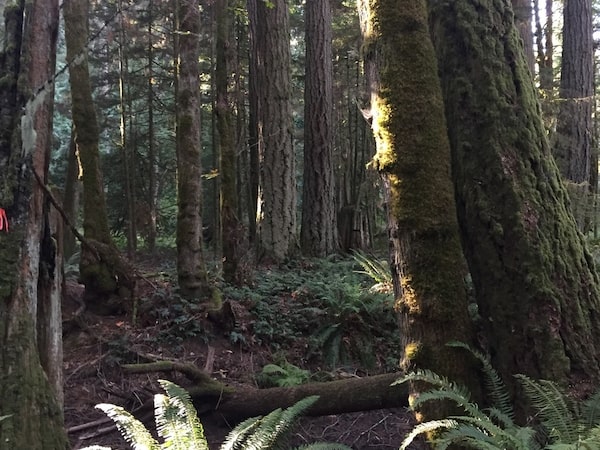
The land involved in the purchase by the trust is home to at-risk wildlife, old-growth trees and diverse salmon species.The Nature Trust of British Columbia
A conservation group has purchased 15 hectares of ecologically sensitive habitat along the Little Qualicum River on Vancouver Island – the latest case of private donors buying up B.C. land to ensure it doesn’t get developed.
The Nature Trust of British Columbia (NTBC), a non-profit organization which has acquired more than 73,000 hectares of conservation land since 1971, is set to announce the $2-million deal on Wednesday.
At-risk wildlife, old-growth trees and diverse salmon species call the untouched land and river home. The habitat is located on the traditional territory of Qualicum First Nation, is in the Coastal Douglas-fir biogeoclimatic zone, one of B.C.’s most vulnerable areas.
“There was no legal protection on the land that was purchased, so the land could have been cleared and developed for housing or other purposes,” said Jasper Lament, chief executive officer of the NTBC. Such land conservation deals protect biodiversity and mitigate the impacts of climate change, he said.
The Little Qualicum River is an important salmon spawning river, providing habitat for species such as chinook, chum, steelhead, coho and coastal cutthroat. A salmon hatchery is located upstream of this new conservation area.
The land was previously owned by Mosaic Forest Management before Island Roots Forestry Services Ltd. purchased it along with other property. Island Roots then approached the NTBC with the opportunity to protect the 15-hectare parcel, which resulted in the conservation group’s purchase.
The land will never be developed, according to Mr. Lament: “The plan going forward is to figure out how to take care of the property in such a way that the existing ecological values are sustained, now and long into the future.”
The purchase was funded by $1.75-million in federal grants and $415,000 from private donors, he said. The objective of the project fits into a larger aim shared by the federal government, which has made international commitments to protect 30 per cent of its lands and waters by 2030.
“This project is one contribution towards achieving that goal,” Mr. Lament said.
B.C. has also committed to the “30 by ‘30″ target, but the Wilderness Committee found nothing in the province’s 2023 budget that will help achieve that goal.
On the lacking of financing, George Heyman, B.C.’s Environment Minister, said in a March interview with The Globe and Mail that conservation money would be available as needed.
Mr. Heyman said his government’s climate plan is more focused on emission reductions and helping communities become resilient to changes brought on by extreme weather. But the province does see conservation as part of the answer to dealing with climate change, he added.
The provincial government also made a commitment in the 2020 election campaign to protect old growth, but it has since come under fire because, despite temporary deferrals, it continued to allow logging in ancient forests.
However, in February, the province committed to creating a new trust fund with its own money to protect endangered ecosystems. That includes $25-million to help First Nations participate in land-use decisions on old-growth forests, and $90-million added to the B.C. Manufacturing Jobs Fund to help forestry companies retool their mills to adapt to second-growth timber.
Even without the province as a partner, non-profits such as the NTBC have slipped past the province’s slow decision-making process to secure environmentally important lands. In addition to the NTBC project being announced this week, that includes the protection of unique pockets of mixed old-growth forests and another purchase that protects rare undeveloped Gulf Islands properties.
Despite some conservation groups not receiving money from B.C., earlier this year the province announced a major new conservation area in Incomappleux Valley secured through financing by the Nature Conservancy of Canada, a non-profit organization that works on permanent land conservation. The province called it one of the most significant new protected areas in a decade.